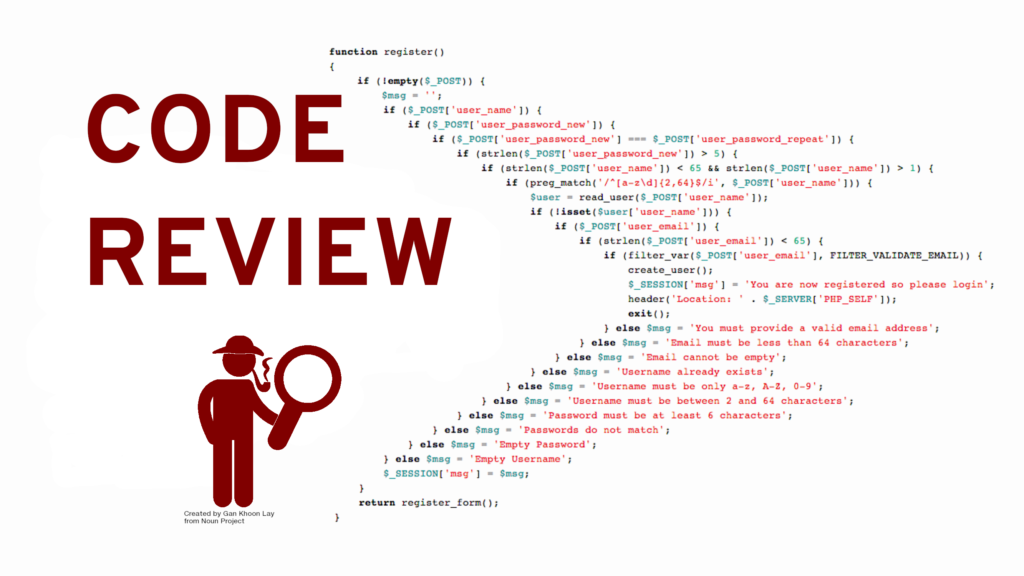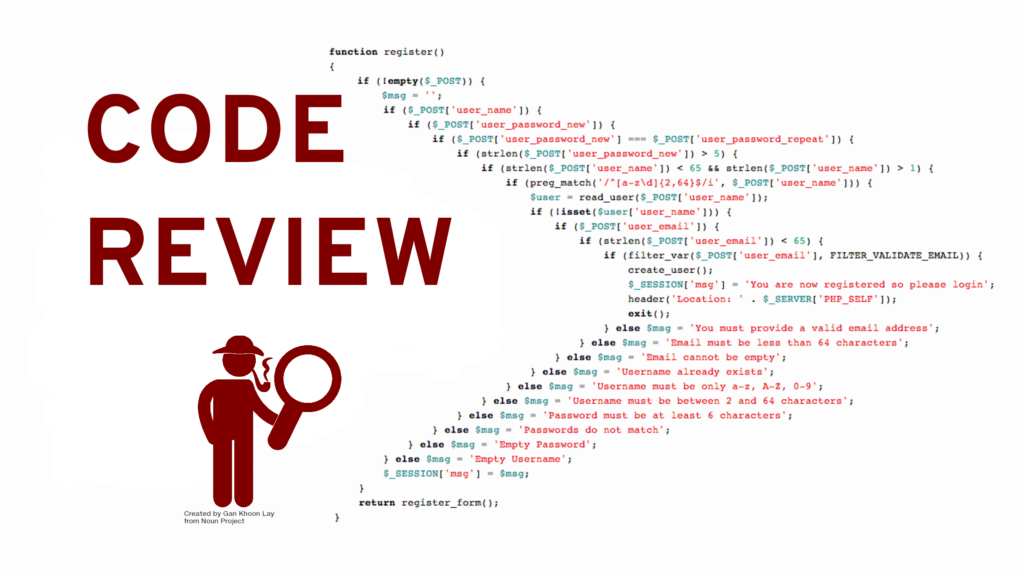In this article we will be diving deep about this interesting topic Source Code Review Tools, Process.

Now, let us see what it means !
Code Review
– As part of the software development process, code review examines the source code to find flaws as soon as possible. Before merging with the codebase, a code review procedure is usually carried out.
– By enhancing code quality at an early stage of the software development process, an efficient code review helps to avoid defects and errors from entering your project.
– The main objective of the code review procedure is to examine any new code for flaws, errors, and compliance with the organization’s quality requirements. There should be more than just one side of the code review process’s feedback. The collective team’s enhanced coding skills are thus an intangible advantage of the code review process.
– You should first choose who will examine the code if you want to start a code review process in your company. If your team is tiny, you can designate team leads to examine every line of code. You might allow a method where each code review is assigned to an experienced developer based on their workload in a larger team with more reviewers.
– You should then decide on deadlines, rounds, and the very minimum specifications for submitting code review requests.
– The procedure of providing input during the code review process is the final point to examine. Make careful to call attention to the code’s advantages and offer workarounds for its shortcomings.
– The developer should be encouraged by your constructive criticism to consider it and, if necessary, start a conversation.
Why Code Review Is Crucial ?
– Because it is never covered in the formal curriculum in schools, the code review procedure is essential. While project management and programming language intricacies can be learned, code review is a process that develops over time as a company grows.
– For the following reasons, code review is essential :
– Make sure your code is error-free.
– Reduce the likelihood of problems.
– Verify that the new code follows the rules.
– Boost the effectiveness of new code.
– Code evaluations also help other team members become more skilled. A junior developer may use the input from a senior developer’s code review to enhance their own coding.
How Should a Code Review Be Done ?
– Code reviews can be done in one of four ways.
Code Reviews for Over-the-Shoulder
– On the developer’s workstation, an experienced team member does over-the-shoulder code reviews, walking through the new code and offering comments through dialogue. It is the simplest method for doing code reviews and doesn’t need a pre-established framework.
– Along with any existing official code review procedures, such informal code reviews may still be carried out today. Traditional over-the-shoulder code reviews took place in person, however distributed teams can use collaborative tools to use this technique as well.
Pass-Around Email
– Geographically dispersed teams have typically used email for code reviews, even though over-the-shoulder code reviews are a fantastic way to review new code.
– A developer emails a comparison of changes to the entire development team throughout this code review process, typically using version control systems that send out automated notifications. This email starts a discussion about the modifications, during which team members may ask for additional changes, identify mistakes, or seek clarifications.
– Due to its flexibility, email was initially the main form of communication. Public mailing lists that were maintained by open source groups were frequently used for code discussion and feedback.
– These mailing lists still exist today despite the development of code review tools, although they are now mostly used for announcements and debate.
Duo programming
– Continuous code reviews are part of pair programming. Two programmers are seated at a workstation, but only one is actively coding while the other offers real-time input.
– It might be a terrific tool for testing new code and teaching engineers, but because it takes so much time, it can end up being ineffective. The reviewer cannot complete any other useful work within the time period due to this process.
Tool-Assisted
– A tool-assisted code review process uses a specialized tool to speed up the code review procedure. Using a tool typically facilitates the following tasks:
– Put the modified files in order and display them.
– Encourage dialogue between developers and critics.
– Utilize metrics to judge the effectiveness of the code review procedure.
– While these are the essential specifications for a code review tool, more recent tools might also include a few more features. Later in this essay, we’ll look at a variety of code review tools.
Why Should You Use Tools for Code Review ?
– Efficiency improvement is the primary result of a code review procedure. Although these conventional techniques of code review have been effective in the past, if you haven’t converted to a code review tool, you might be losing efficiency. A code review tool automates the procedure, allowing the reviewer to concentrate entirely on the code.
– Before new code is merged into the main repository, a code review can be started using a code review tool that connects with your development cycle. To easily include a tool into your workflow, choose one that is compatible with your technological stack.
– Make sure the tool you choose supports these technologies in order to integrate into the development process, for example, if you use TravisCI for continuous integration and Git for code management.
– Software development involves both dynamic and static code testing.
– When performing a dynamic analysis, a specified script will often run unit tests and check to see if the code adheres to a set of rules. After a developer writes new code to be merged with the existing code, static code testing is performed.
– Let’s now explore some of the most well-liked code review tools!
An Examination of 12 Strong Code Review Tools
We examine the most well-liked static code review tools in this area.
1. Review Board
2. Crucible
3. GitHub
4. Phabricator
5. Collaborator
6. CodeScene
7. Visual Expert
8. Gerrit
9. Rhodecode
10. Veracode
11. Reviewable
12. Peer Review for Trac
Conclusion
That’s all about the Source Code Review Tools, Process. After reading this essay, I hope you found it enjoyable and learned something new. We have learned what is source code review, methods of doing the review, why it is crucial, why you should use tools, and tools for examining for code reviews.


